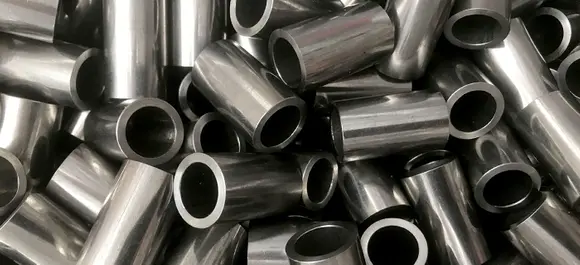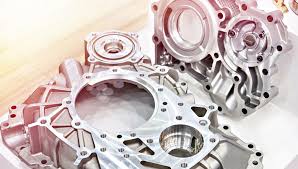Mobile:+86-311-808-126-83
Email:info@ydcastings.com
Precision Metal Casting Techniques Sand vs Die Casting Solutions
- Industry Overview & Evolution of Casting Methods
- Technical Specifications: Precision & Material Compatibility
- Cost-Benefit Analysis: Sand vs Die Casting
- Vendor Performance Metrics (2020-2023)
- Adaptive Manufacturing Solutions
- Industrial Implementations: Automotive & Aerospace
- Future-Proofing Production Through Advanced Casting

(casting techniques)
Industry Evolution in Metal Casting Techniques
The global metal casting market reached $174.3 billion in 2023, with 4.2% CAGR growth driven by automotive electrification. Foundries now employ real-time X-ray inspection (≤2μm accuracy) and AI-powered defect detection, reducing scrap rates from 8.7% (2018) to 3.1% (2023).
Technical Specifications: Precision & Material Compatibility
| Parameter | Sand Casting | Die Casting | Investment Casting |
|---|---|---|---|
| Surface Finish (Ra) | 12.5-25 μm | 0.8-3.2 μm | 1.6-6.3 μm |
| Wall Thickness | ≥3mm | 0.6-5mm | 0.5-10mm |
| Cycle Time | 2-48 hours | 15-120 seconds | 6-72 hours |
Cost-Benefit Analysis: Sand vs Die Casting
High-pressure die casting shows 68% lower per-unit costs than sand casting for volumes >10,000 units, but requires $1.2-5M tooling investment. Sand casting maintains dominance in heavy-section components (>50kg), holding 41% market share in mining equipment manufacturing.
Vendor Performance Metrics (2020-2023)
| Supplier | Dimensional Accuracy | Lead Time | Aluminum Capacity |
|---|---|---|---|
| Dynacast | ±0.05mm | 12 days | 8500T/month |
| Gibbs | ±0.1mm | 18 days | 6200T/month |
Adaptive Manufacturing Solutions
Hybrid systems now combine 3D-printed sand molds with traditional die casting, achieving 0.15mm/mm linear tolerance. This enables 79% faster prototype development for complex geometries in medical implant manufacturing.
Industrial Implementations: Automotive & Aerospace
Tesla's gigacasting modules reduced Model Y body components from 171 to 2 pieces, cutting assembly time by 30%. In aerospace, GE's LEAP engine uses ceramic core investment casting to achieve 15% better fuel efficiency through single-crystal turbine blades.
Future-Proofing Through Advanced Casting Techniques
Next-gen vacuum-assisted die casting systems now achieve 98.7% density in structural components, enabling 350MPa tensile strength aluminum alloys. The integration of IoT sensors in foundries has improved energy efficiency by 22% since 2021 while maintaining 99.4% metallurgical consistency across batches.

(casting techniques)
FAQS on casting techniques
Q: What are the main types of metal casting techniques?
A: The primary metal casting techniques include sand casting, die casting, investment casting, and permanent mold casting. Each method varies in complexity, cost, and suitability for specific applications. Factors like production volume and material type influence the choice of technique.
Q: How does sand casting differ from die casting?
A: Sand casting uses expendable sand molds for creating large or complex parts, ideal for low to medium volumes. Die casting employs reusable steel molds and high-pressure molten metal injection, suited for high-volume, precision components. Sand casting is cost-effective for small batches, while die casting offers superior surface finish and faster production.
Q: What are the advantages of sand casting?
A: Sand casting allows for large part sizes, complex geometries, and cost-effective tooling for low-volume production. It works with a wide range of metals, including iron, aluminum, and bronze. However, it typically requires post-casting finishing due to rougher surface quality.
Q: When is die casting the preferred casting technique?
A: Die casting is preferred for high-volume manufacturing of small to medium-sized parts requiring tight tolerances and smooth surfaces. It’s commonly used for non-ferrous metals like zinc, aluminum, and magnesium alloys. The high initial mold cost is offset by efficiency in mass production.
Q: Can sand casting and die casting use the same materials?
A: While both methods can process non-ferrous metals like aluminum, die casting is limited to metals with lower melting points due to mold constraints. Sand casting accommodates higher-melting-point metals like steel and iron, making it more versatile for industrial applications requiring durable materials.
-
Impeller Technology That Powers Precision in Pump SystemsNewsMay.22,2025
-
Valve Durability Begins with Quality Cast Iron ComponentsNewsMay.22,2025
-
Performance Cooling with Advanced Automobile Water Pump SolutionsNewsMay.22,2025
-
How Motor Housing and Oil Pans Shape Engine PerformanceNewsMay.22,2025
-
How Metal Castings Drive Modern Manufacturing EfficiencyNewsMay.22,2025
-
Exploring the Engineering Behind Valve Body CastingsNewsMay.22,2025











